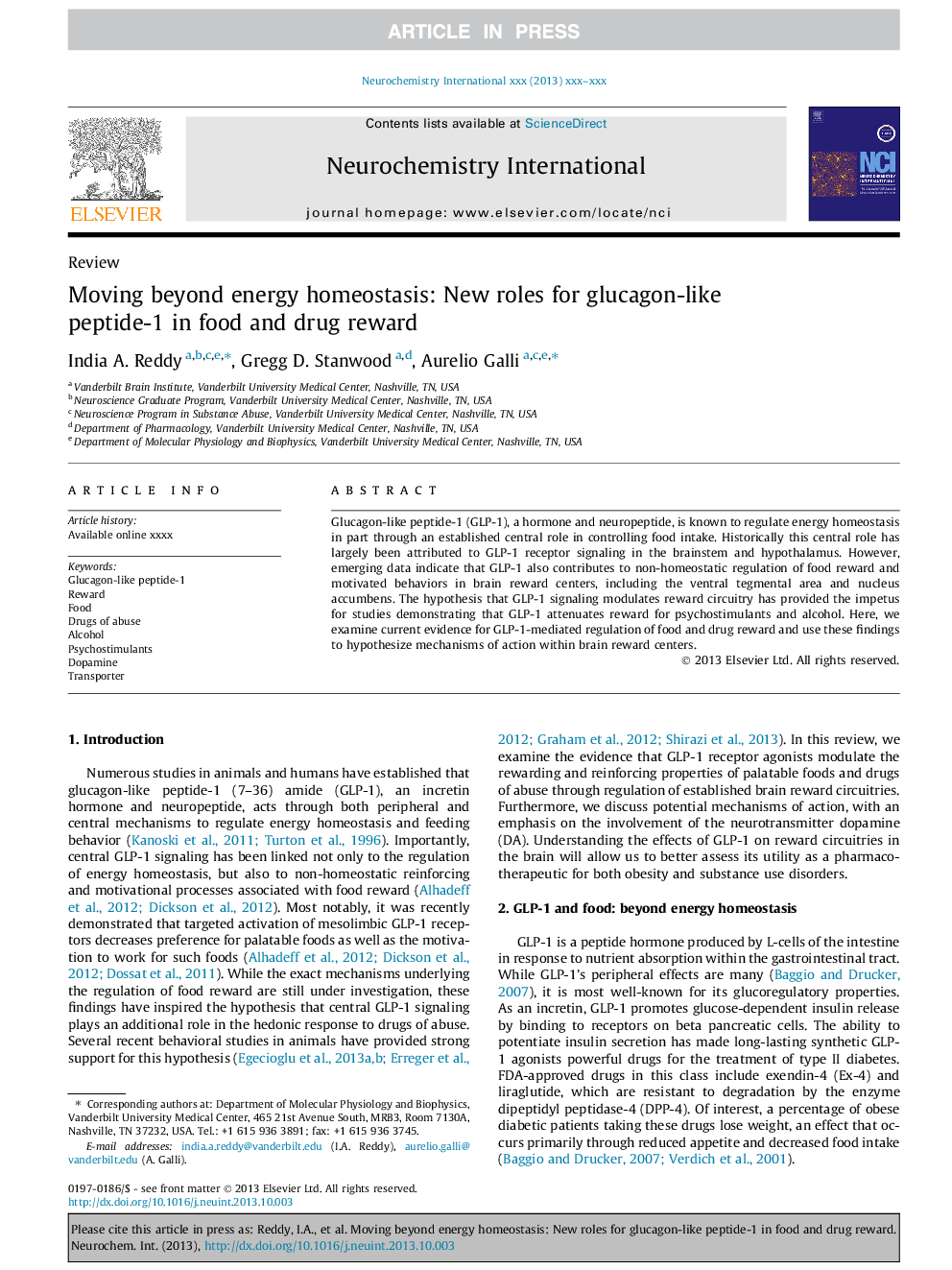| Article ID | Journal | Published Year | Pages | File Type |
|---|---|---|---|---|
| 8479226 | Neurochemistry International | 2014 | 7 Pages |
Abstract
Glucagon-like peptide-1 (GLP-1), a hormone and neuropeptide, is known to regulate energy homeostasis in part through an established central role in controlling food intake. Historically this central role has largely been attributed to GLP-1 receptor signaling in the brainstem and hypothalamus. However, emerging data indicate that GLP-1 also contributes to non-homeostatic regulation of food reward and motivated behaviors in brain reward centers, including the ventral tegmental area and nucleus accumbens. The hypothesis that GLP-1 signaling modulates reward circuitry has provided the impetus for studies demonstrating that GLP-1 attenuates reward for psychostimulants and alcohol. Here, we examine current evidence for GLP-1-mediated regulation of food and drug reward and use these findings to hypothesize mechanisms of action within brain reward centers.
Related Topics
Life Sciences
Biochemistry, Genetics and Molecular Biology
Cell Biology
Authors
India A. Reddy, Gregg D. Stanwood, Aurelio Galli,
